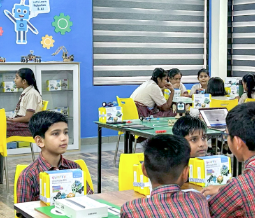In a personalized learning environment, assessment should reflect the unique goals, progress, and strengths of each student. Rubrics—when designed thoughtfully—are a powerful tool to support this individualized approach. They offer clarity, consistency, and flexibility, helping both educators and students track learning in meaningful, student-centered ways.
What Is a Rubric?
A rubric is a scoring guide that outlines expectations for an assignment or performance. It typically includes criteria (what will be assessed) and performance levels (descriptions of how well the student met each criterion). In personalized learning, rubrics go beyond grading—they become part of the learning process.
Why Use Rubrics in Personalized Learning?
- Clarify Expectations: Rubrics provide transparency and help students understand what success looks like.
- Support Student Voice: When students help co-create rubrics, they take ownership of their goals and outcomes.
- Guide Feedback and Reflection: Rubrics offer a structure for self-assessment, peer review, and teacher feedback.
- Accommodate Diverse Learners: Customized rubrics can reflect different learning styles, abilities, and project formats.
Steps to Create Effective Rubrics
- Align with Learning Goals: Focus on the key skills or understandings the lesson aims to develop.
- Define Clear Criteria: Choose a few essential elements to assess (e.g., creativity, accuracy, analysis, collaboration).
- Describe Performance Levels: Use student-friendly language to explain what beginning, developing, proficient, and advanced performance looks like.
- Invite Student Input: Where appropriate, involve students in choosing or modifying rubric elements to reflect their personal learning goals.
Using Rubrics for Formative Assessment
Rubrics are especially useful during the learning process—not just at the end. Teachers can:
- Provide ongoing feedback based on rubric criteria.
- Use rubrics during check-ins or conferences.
- Encourage students to assess their work and set next steps.
Adapting Rubrics for Student Choice
In personalized settings, students may complete different types of projects or choose their own formats for demonstrating understanding. Flexible rubrics focus on shared competencies rather than specific products. For example, a rubric for communication could be applied to a speech, video, or written report.
Conclusion
Rubrics are more than just assessment tools—they’re essential components of personalized learning. By offering clear expectations, guiding reflection, and supporting flexibility, rubrics help create a learning culture where students understand their progress and feel empowered to grow. With thoughtful design and regular use, rubrics can turn assessment into a meaningful part of every student’s journey.














